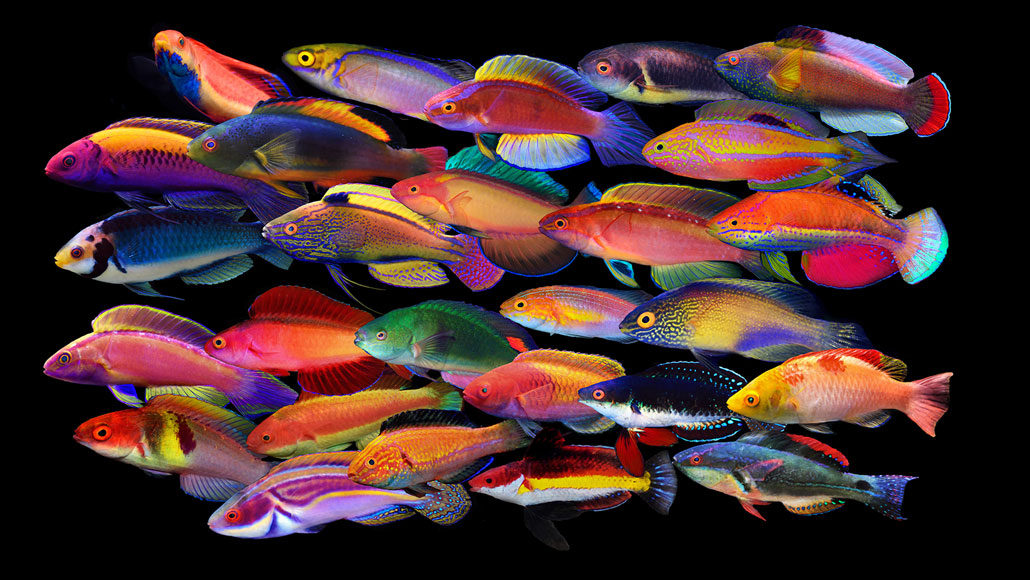For this week's blog post, I decided to choose Darwin's "lineages split and diverge (speciation)" prediction based off of his ideas on descent with modification To really understand what this prediction meant, I looked up the word "speciation". According to Biology Dictionary, speciation is a process that occurs through evolution that in turn leads to a new, distinct species forming that are unable to reproduce with each other (Biology Dictionary). After scouring the internet, I was able to come up with an article that is a great example of this predication to prove that it is in fact a real thing. Jake Buehler's article discusses fairy wrasses (Cirrhilabrus), which are a type of fish. I have included a picture so you can see what they look like.

(Buehler)
Don't they look super cool? This is a picture of a group of males. They are vibrantly colored to attract mates (Buehler). The article goes on to say how it has taken 12 million years of evolution to produce the great array of colors that you can see above. As of now, there are 60 species of fairy wrasses, and new ones are still being discovered. Because of the large amount of different species of this one fish, scientists wondered how this could be. After comparing DNA from several different fairy wrass species, scientists discovered how they were interrelated and where they split from one another on the evolutionary tree (Buehler).
Fairy wrasses specifically diverged away from other wrass species about 12 million years ago, but many of the fairy wrass species we see today only emerged about 1 to 3 million years go in a coral reef in the western Pacific Ocean. Now they are found all over the place! Tea, a scientist, and his team think that this example of rapid evolution happened based off of where the fish were originally located. During the Pliocene and Pleistocene Epochs, ice ages changed the seascape where the wrasses lived. The ice turned the reefs into land bridges, which isolated fish on either side of the ice barrier. This encouraged speciation (Buehler).
Another way the fairy wrasses underwent speciation was picky males, (lol). Males had a lot of pressure to attract a mate and make sure she was of the right species. These fish eventually gained fluorescence in their scales, which only attracted certain females. This only furthered reproductive isolation (Buehler).
Sources:
Biology Dictionary, et al. “Microevolution: Definition, Examples, Quiz.” Biology Dictionary, 5 Oct. 2019, www.biologydictionary.net/microevolution/.
Buehler, Jake. “Flamboyant Fishes Evolved an Explosion of Color as Seas Rose and Fell.” Science News, 31 Mar. 2021, www.sciencenews.org/article/fish-fairy-wrasse-color-evolution-coral-reef-sea- level-ice-age.
I love your example! I would enjoy looking further into the specifics of the species: are the different Fairy Wrasses able to reproduce and just choose not to (and their pickiness led to their split lol), or was it mainly the geography, are they so different genetically now that even if they wanted to they couldn't? It's such a rabbit hole when you start delving in!
ReplyDelete